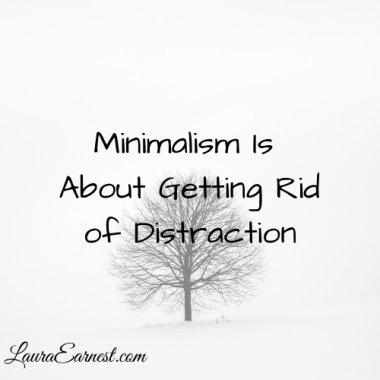
What’s in My Daily Plan and Review
One of my coworkers was recently complaining that she never knew what she had to do during a given day and that her days always seemed to be taken up by things that landed on her desk that day. She had big projects and wasn’t making any progress but wasn’t sure exactly where her time was going.
A simple daily plan and review can answer all these questions. By learning how to craft a two-step routine, you can know what is coming at you during a day, what you spent your time on, and figure out where to get the time to work on projects.
The Power of the Plan and Review
I find that my daily plan has the power to hold my day together. If I make a good one, the day goes smoothly. If I don’t make a plan, I am at the mercy of whatever blows into my inbox.
Likewise, if I do a review of the day, I can spot patterns that may otherwise elude me. I might see that my lack of energy shown by vegetating in the evening needs to be attended to directly. Or I might see that I have been too busy or busy with the wrong things. The review can keep me on track in the day ahead.
Today we will talk about what is in my daily plan and review…and why.
The Two Phases: Plan and Review
My approach to the day has two distinct phases: planning and reviewing. Sometimes they happen at the same time; but they both have to happen. Failure to plan means the day will be off track. Planning without reviewing ensures I will keep repeating patterns that are detrimental. Reviewing without planning is pointless because I have no benchmark with which to compare my day.
Planning is figuring out what is coming at me, and right-sizing the day. It’s about looking foward.
Reviewing is about comparing what actually happened with what was intended, and looking for things that popped up that need to be attended to.
Planning
Planning would ideally be done the night before. In the work notebook, this happens before I leave for the day. One of my shutdown-the-day tasks is to plan the next workday. I find that I have to do this or I will forget what I need to tackle first thing in the morning.
On the personal front, planning the night before doesn’t happen often. And when I say often, I mean 99% of the time. But my planning is done at the latest when I sit down at my desk to work (on workdays) or as I eat breakfast (non-work days). I find it is crucial so I have some idea of what I need to accomplish.
Here is what I do during this planning phase.
- Set up my Bullet Journal page. Each notebook has a specific format to the day header. For work, it’s a line, below which I list the date, day of week, scheduled and actual hours. For my personal notebook, it is a grid of hours that I can block out to see my busy hours, as well as the date and day of the week. I do this to have a clear visual indication of when the day started in the notebook.
- Look at the weather. ****In my personal notebook, I also note the weather: high and low temperatures, and what it is supposed to be the majority of the day: sunny, cloudy or rainy. This serves a specific purpose. Not only do I know how to dress for the day, but it also informs how long I have to allow for transit times, because people in my area don’t drive well when the streets aren’t dry.
- See what’s on the calendar. Next I look at what is on the schedule for the day. In the work notebook, it reminds me of meetings and allows me to determine when my best blocks of uninterrupted time for programming and design are going to occur. In my personal book, this lets me see how full my day is, and how much time I will have to do other projects. I do this so I am not caught unaware (or outright miss) an appointment on my calendar.
- Look at my tasks for the day. In my work notebook, this is a list of open loops I don’t want to lose track of. This could be tasks that need to be attended to, or where I am in the development of a feature. In my personal notebook, I read the tasks for the day off of my task manager, and decide if I have enough time to tackle them.
- Right size the day. During this phase, I note what needs to be moved to another day based on my available time. At work, it is just a matter of drawing the symbol next to the task (>). In my personal notebook, I write down what I am to do, and move the rest forward in Remember The Milk. Doing this allows me to keep the quantity of work I expect myself to perform under control.
- Block my workday. In my work notebook, I rarely have to write down the blocks. But I often take a sticky note and set my goals for each open time chunk during the day. In my personal notebook, I will color in the time grid day separator and color matching tasks. I only do this for time up until dinner; everything after dinner works under a different system. This gives me a sense of how the day will flow, and allows me to get tasks done on my lunch hour or immediately after work.
Review
Reviewing would ideally be done at the end of the day. I manage this quite well at work, because I transfer my notes into the billing system at the end of each work day.
In my personal notebook, this generally happens right before I do the daily plan. In other words, right before I do my planning for the day.
Here’s what my review consists of:
- Write up my notes. I’ve felt this is more important for my work than my personal life simply because I have to produce weekly status reports. However, since I started reading The Bullet Journal Method*, I have begun to reconsider the notes aspect of my personal life. Right now my BuJo is a record of appointments and tasks, and I want it to include what I did that day as well as thoughts. That means I have to write notes.
- Compare what I did with what I intended to do. As a data nerd, I like comparing the actual with the plan. I haven’t come up with a way to put numbers to it yet, but I do look to see what I intended to do that didn’t get done. This allows me to adjust for the next day.
- Make notes on anything still bugging me about the day. I have found that if I leave things floating in my head I will either forget them or I will wake up in the middle of the night thinking about them. For each environment, I spend a couple minutes after I reviewed the day to see if there is anything that I need to note for the future. I find that doing this clears my mind and permits me to focus on the activities at hand without being dragged back to work, or some unfinished task.
- Generate and move tasks. If I didn’t finish a task, I have the choice of pushing it to the next day or not doing it. In both work and personal notebooks, I go over what was left undone and make the decision on those tasks. I find that this helps keep the number of overall tasks in hand.
What is in your daily review? Do you have something you couldn’t do without? Share below. And if you want more information about why I keep two notebooks, read the article Why I Keep My Work And Life In Separate Notebooks





One Comment
Heather
I got a lot of great ideas from this post! I love my bullet journal and I’m working on being more productive and working on the balance between my personal and professional work. Thank you for the ideas!